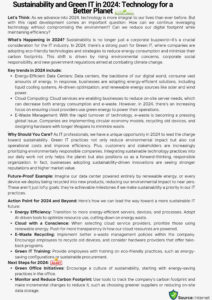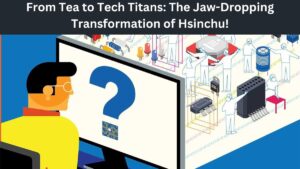
Introduction: The fashion industry is undergoing a profound transformation as consumers and brands alike increasingly prioritize sustainability and ethical practices. With growing concerns about the environmental and social impacts of fast fashion, there has been a shift towards more sustainable and responsible approaches to clothing production and consumption. In this comprehensive exploration, we delve into the evolution of sustainable fashion, examining the rise of ethical practices, the emergence of circular economy models, and the role of consumer awareness in driving change.
- The Environmental and Social Impacts of Fast Fashion:
- Begin by discussing the detrimental effects of fast fashion on the environment, including resource depletion, water pollution, and greenhouse gas emissions.
- Explore the social implications of fast fashion, such as exploitative labor practices, unsafe working conditions, and the perpetuation of poverty in garment-producing regions.
- Highlight the need for alternative approaches to fashion production and consumption that prioritize environmental sustainability, social responsibility, and ethical labor practices.
- The Rise of Sustainable Fashion Initiatives:
- Examine the emergence of sustainable fashion initiatives aimed at reducing the industry’s environmental footprint and promoting social equity.
- Discuss the adoption of eco-friendly materials such as organic cotton, recycled polyester, and TENCEL™ lyocell, and their benefits in terms of reduced resource consumption and pollution.
- Highlight the implementation of ethical labor practices, fair wages, and safe working conditions in garment factories, supported by certifications such as Fair Trade and SA8000.
- Circular Economy Models in Fashion:
- Explore the concept of the circular economy in fashion, which aims to minimize waste and maximize the lifespan of clothing through recycling, reusing, and repurposing.
- Discuss innovative initiatives such as clothing rental and subscription services, resale platforms, and garment-to-garment recycling programs, which encourage consumers to extend the life cycle of their clothing.
- Highlight the potential of circular economy models to create economic value, reduce environmental impact, and foster a more sustainable fashion industry.
- . Consumer Awareness and Demand for Sustainable Fashion (Continued):
- Consumer awareness plays a pivotal role in driving the demand for sustainable fashion. In recent years, there has been a notable shift in consumer preferences, with more individuals prioritizing sustainability, ethical production, and transparency in the fashion industry. This shift can be attributed to various factors, including increased access to information through social media and digital platforms, as well as growing concern about environmental issues such as climate change, pollution, and resource depletion.
- Social media platforms have become powerful tools for raising awareness about the environmental and social impacts of the fashion industry. Influencers, activists, and organizations use platforms like Instagram, Twitter, and TikTok to share information, advocate for sustainable practices, and hold brands accountable for their actions. Hashtags such as #whomademyclothes and #slowfashion have gained traction, sparking conversations about supply chain transparency, labor rights, and conscious consumption.
- Documentaries and media exposés have also played a significant role in educating consumers about the dark side of fast fashion. Films like “The True Cost” and “RiverBlue” shed light on the environmental devastation and human exploitation associated with the fashion industry, prompting viewers to reevaluate their shopping habits and demand more ethical and sustainable alternatives.
- As consumer awareness grows, so does the demand for sustainable fashion. Millennials and Gen Z, in particular, are driving this shift, as they are more likely to value sustainability and social responsibility when making purchasing decisions. According to a survey by Nielsen, 73% of Millennials are willing to pay more for sustainable products, compared to 66% of Gen Z and 55% of Baby Boomers. This generational shift in consumer attitudes is influencing brands to prioritize sustainability and transparency in their operations.
- Sustainable fashion brands and initiatives are capitalizing on this growing demand by offering eco-friendly and ethically produced alternatives to conventional fashion. From organic cotton basics to recycled polyester activewear, consumers now have a wide range of sustainable options to choose from. Furthermore, the rise of resale platforms and clothing rental services has made it easier for consumers to access designer clothing at affordable prices while reducing their environmental footprint.
- 5. Challenges and Opportunities in Sustainable Fashion (Continued):
- While the momentum towards sustainable fashion is undeniable, the industry still faces significant challenges on the path to widespread adoption. One of the primary challenges is the cost associated with sustainable production methods and materials. Eco-friendly materials such as organic cotton, hemp, and TENCEL™ lyocell are often more expensive to produce than their conventional counterparts, leading to higher retail prices for sustainable clothing.
- Another challenge is the limited availability of eco-friendly materials and manufacturing processes. While demand for sustainable fashion is growing, the infrastructure and supply chains necessary to support mass adoption are still in the early stages of development. Brands must invest in research and development to innovate new materials and technologies that reduce environmental impact without compromising quality or performance.
- Furthermore, the lack of industry-wide standards and certifications makes it difficult for consumers to discern which products are genuinely sustainable and ethical. While certifications such as GOTS (Global Organic Textile Standard) and Fair Trade provide some level of assurance, there is a need for greater transparency and accountability throughout the supply chain. Brands must be proactive in disclosing their practices and sourcing policies to build trust with consumers and differentiate themselves in the market.
- Despite these challenges, there are numerous opportunities for innovation and collaboration within the sustainable fashion ecosystem. From eco-friendly textile innovations to regenerative agriculture practices, the industry is ripe for disruptive solutions that prioritize sustainability, social responsibility, and innovation. Cross-sector partnerships between brands, suppliers, NGOs, and government agencies can drive systemic change and create a more sustainable future for fashion.
Conclusion: In conclusion, the evolution of sustainable fashion represents a significant paradigm shift in the industry, driven by growing awareness of environmental and social issues and changing consumer preferences. By embracing ethical practices, adopting circular economy models, and prioritizing transparency and accountability, fashion brands can mitigate their environmental footprint and contribute to positive social impact. As consumers continue to demand more sustainable and responsible products, the fashion industry must innovate and collaborate to meet these evolving needs and build a more sustainable future for fashion.






